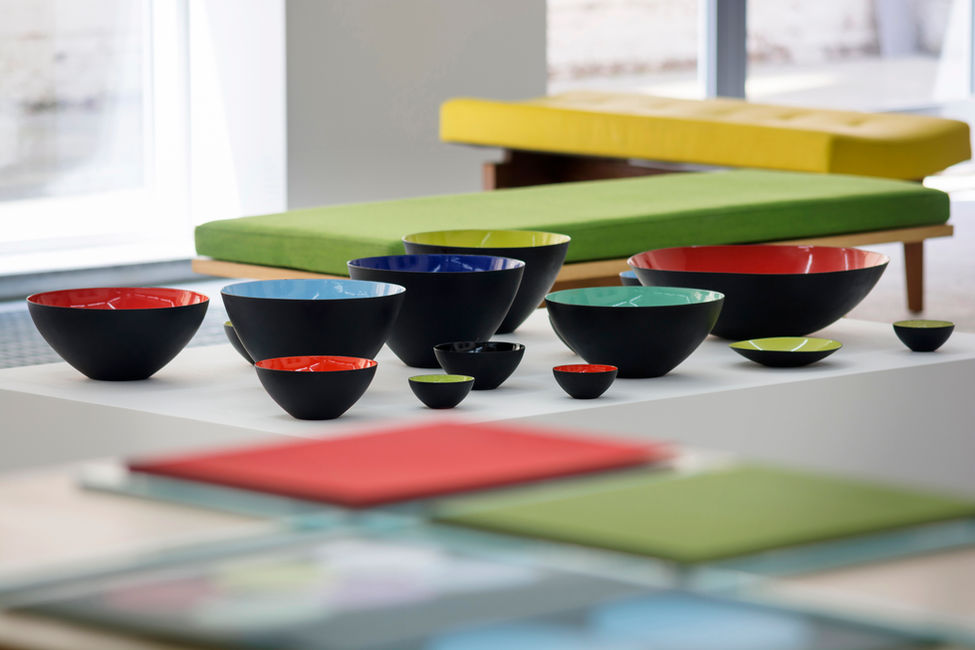Herbert Krenchel Danish | 1922-2014
Krenit bowls have become Danish design classics. The first of these coloured enamel bowls were designed by Herbert Krenchel in 1953 and eight different sizes, in eight standard colours, were developed over the next two years. The best-selling range of bowls were continuously in production until 1965.
Herbert Krenchel was not a designer. He was a researcher in the field of mechanical engineering at the Technical University of Denmark. He worked on composite materials and fibre reinforcement. He was innovative both within and outside his immediate field of expertise. The idea of using his research to create homeware developed from a conversation with Torben Ørskov in the early 1950s.
Krenit bowls were the first products distributed by Torben Ørskov & Co. Ørskov also ran a group of shops called ‘Form & Farve’ which marketed functional well-designed domestic products. Ørskov was inspired by the American fashion for salad eating and saw a gap in the market. Krenchel suggested to him that he could create a distinctive salad bowl from enamel and steel but Ørskov was at first sceptical.
Krenchel was determined to prove the beauty of enamel. His bowl shapes were intuitive and drawn with a thin sharp line. He used millimetre-thick steel plate from which the bowls were cold-pressed then sprayed with coloured enamel powder and fired in a kiln. Finally, the black exterior of the bowls was sand-blasted so a matt finish on the outside contrasted with the strong glossy colour inside.
In 2006 Rocket presented the first comprehensive exhibition of Krenchel’s pioneering work, drawing from an extensive stock of 200 original vintage bowls.
In 2007 the Daimler Art Collection acquired a group of bowls from Rocket and exhibited them in Minimalism & Applied I at their Berlin gallery. The same group of bowls was also exhibited in Minimal Funktional, Artists as Architects and (Graphic) Designers at Museum im Kulturspeicher, Würzburg in 2008.







